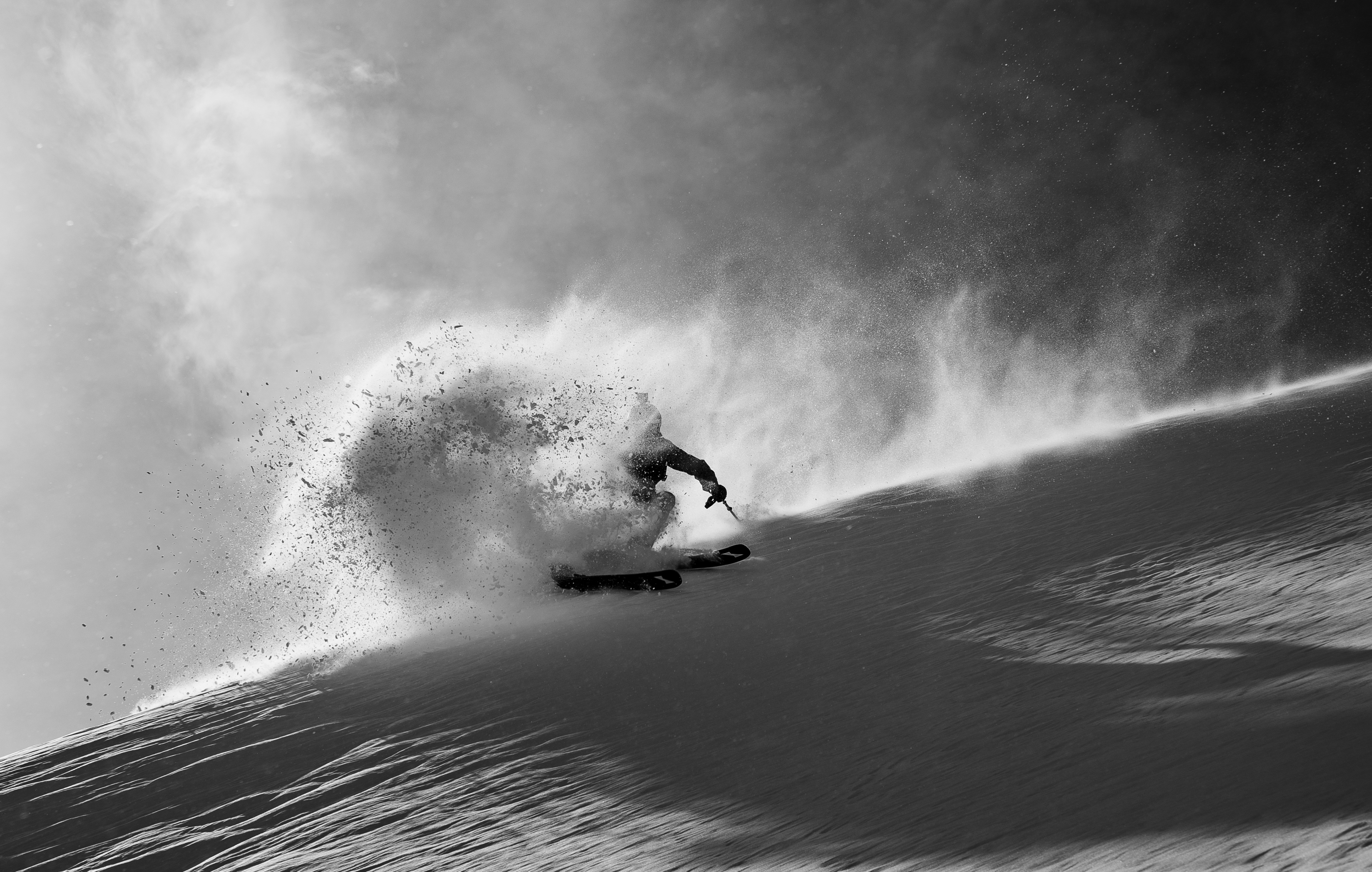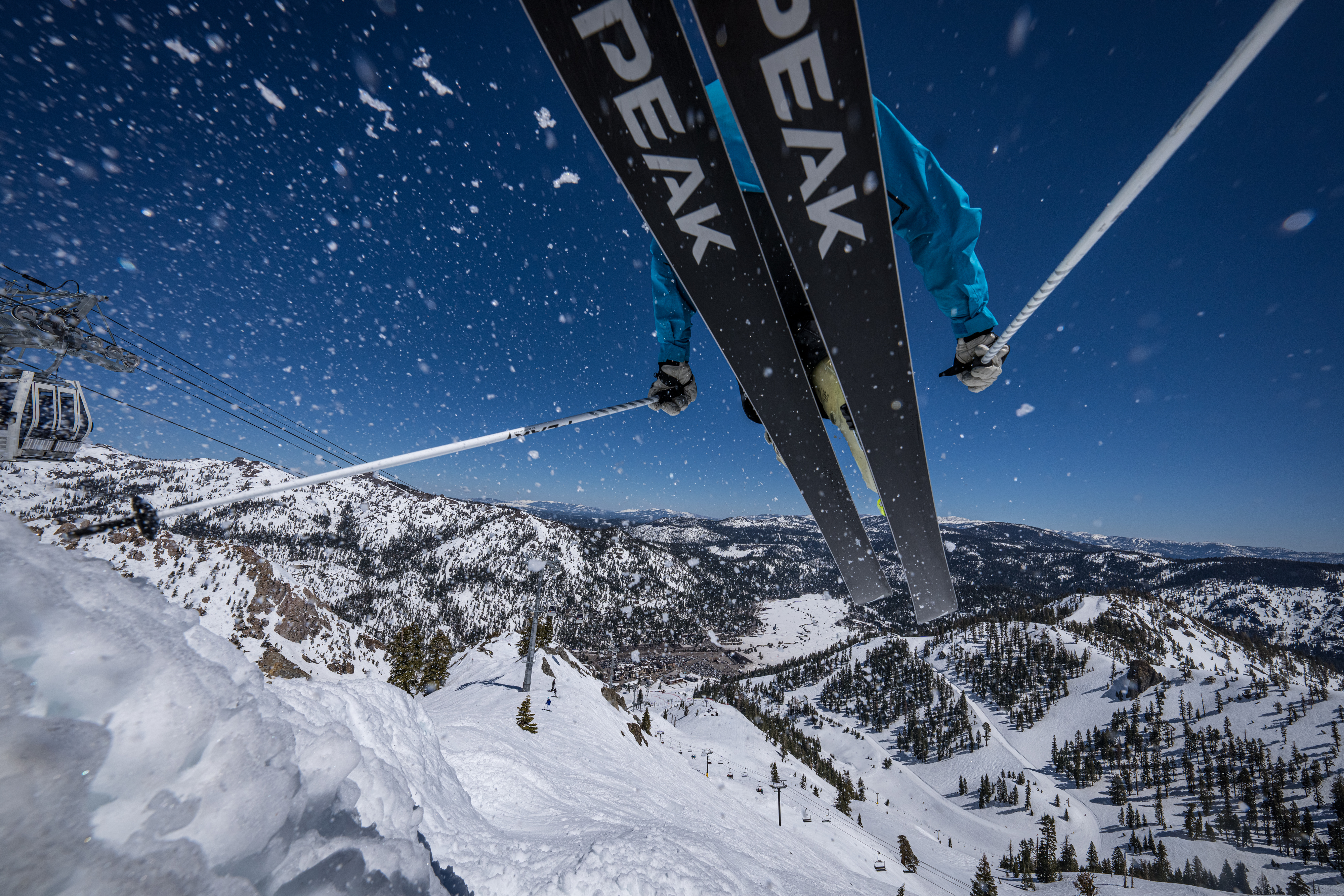Bode Miller is a true innovator. Ever since he started tinkering with the K2 skis, he has always been at the forefront in looking at ways to improve what is underfoot for him. Never happy to settle for second best, when Miller talks, people listen. It is not just the construction of skis that he looks at but the way a ski performs. This is a new and exciting project Miller is heading.
Now he has his own brand, Peak Skis, and after a year of selling in the US, he is launching into Europe. ”We want to gauge and get ahead of the demand curve in Europe, we sold a few hundred skis over there last year but they were all bought through the US so it is hard to gauge interest, we did zero advertising so it makes sense to launch over there when people are talking about the World Cup at Soelden.”
Miller was always tinkering with his skis at all the brands that he raced for, this was for high performance skis, how does this translate into building a brand like Peak? From his days racing on K2, Rossignol, Fischer, Atomic and Head, he has worked with some of the best engineers in the world to get the ski to work to his high demands.
When it comes to the ski building industry, Miller is a real innovator. “It was the resistance you get from the status quo, everybody has to build skis, a lot of companies are starting to build for next year right now. They have already built for this year but they do not really innovate, no one is really innovating, they kind of add some flashes here and there.” Miller understands that economic goals have to be met “and there is not really a whole lot of room for risk taking.”
“It does not change, it is about your performance criteria. You still want the ski to be predictable in hairy situations so that it reduces the demand on the bindings as they are the weak link. It is kind of the same set up, I have a lot of experience in working with the best engineers at each company that I was with over the years. I am really good at mushing stuff together, I have a kind of engineers mind.”
With this in mind Miller recognises that all the variables are interconnected when working on a ski. The variables are so interconnected, Miller explained, you have to have an innate sense that when you change this, you have to slide these other five variables in these ways like a combination lock otherwise you make something that is good, worse. You cannot just change one thing, this really seems to stagnate the innovation in the sport.
When it comes to racing, Miller felt the rules hampered the set up of the ski, “We were hampered by the rule regarding radius, height of the ski and width as it is this technology that filters down into the general public ski. The build of skis has not really changed since the first skis were built in late fifties,” Miller explained on ‘The Next Turn’ podcast
Miller was always pushing limits when he was racing. From early on hew knew that he was going to have to use what skill set he had, if he was going to beat the best in the world. “You cannot leave any stone unturned in what your advantage might be or your specific strength might be to over come your weaknesses,” he explained.
The way he was able to push limits and deal with the consequences of making mistakes was a signature of his racing career, “I am really resilient that way both physically and mentally,” he explained.
Miller is excited in how the ski building project is going. “There are always little challenges but the skis have been well received and sales are going well, I am excited. The skis are a part of it but the operation takes a lot of work. We have a good group of people now that are excellent at their jobs and that takes a huge pressure off me.”
Miller recognises that there are a lot of skis out on the market at the moment and they are he feels “so similar,” so it is a challenge to step out of the mould, “It is a challenge to do something different and challenge people to try that.”

Miller knew that he “had wined about getting things done so it was time to do it himself,” he laughed.
Asked whether he would be following Marcel Hirscher into the race market, Miller explains that it is a much smaller market but “it is really important to me.”
Miller continues “We will eventually build race skis but I do not know if we will venture into World Cup just because the whole economic structure of world cup is a write off for the main companies. It is their primary promotional tool to sell lots of skis to the public. We just don’t produce very many skis so it doesn’t really make sense as it is a really big investment in time.
“If I built the best race ski in the world for a racer who normally would not have a chance to win a race, to have a chance to win a race but I could not pay him anything, I would be taking money away from him. Even though he is winning races, the prize money is only CHF35,000 yet with other companies he would make three times that in bonuses,” explained Miller.
“In the short term we will build junior race skis and move the ball forward from there,” Miller continued.
Miller has always tinkered with his skis so testing his own brand is nothing new for him. When he was racing it was not uncommon to see him laying up skis with his own hands so that he got them just how he wanted them. “With Peak Skis because it is a recreational ski and not a race ski, it was really fun to be able to play in different areas. In racing, the goals and purpose of the ski is pretty exclusive, it is to make you faster,” Miller explains.
“In recreational skiing it is more of a sensation, more of a versatility goal,” Miller continues.
There is little doubt that Miller has an engineer’s mind when discussing skis. He knows what he wants and how to improve a ski through the smallest of details. While he describes the range of Peak Skis as recreational skis, each model in the brand has its own target market. With different waist measurements in the middle of skis all meaning that the models range from on slope skis, to all mountain models and then also for powder days. The measurements range from 78mm up to 118mm.

So what makes Peak Skis different?
Miller and his co-workers have moved away from the historical tip, centre, tail design where the tip tracks, the centre displaces the snow and the tail tracks. “This is great for arcing on really clean snow,” Miller explains “but if you put it into variable conditions there are a whole lot of weaknesses that come out of that so it is pretty specific to really clean snow, particularly to racing.
“What we have done now is to move away from that. I thought that was an amazing innovation for the industry and lots of people got really excited to ski because turning was so much easier.” Miller has not been very inspired by the design of skis since, “especially when you look at the number of injuries that occur,” he continued.
“We have taken a different philosophy in how to make a ski turn. It is not straight displacement, it is not a side cut turn, it is not a shaped ski turn, it certainly has more shape than the old straight skis but nowhere near the standard skis now. We are using the keyhole that causes the ski to bend a certain way. It really is markedly different, it is much quicker, much more consistent, it is much more in the centre of the ski.”
Miller describes the feeling of a turn on the Peak Skis as “the second you touch the edge with any energy, it pushes straight back underneath you. The ski is much better for beginner and intermediate skiers to understand the feel of edging the ski clean as opposed to turning it sideways and pushing on it if you slid a turn or stopped,” Miller feels.
“It naturally pushes against you and gives you more confidence, more quickly. It is an immediate kinaesthetic feedback through the foot that when there is pressure there it will support you. When that is immediate it gives people more confidence and they are then able to push harder on it and it pushes harder back and they can make more angle and make cleaner turns.
These new skis, Miller feels, change the dynamics of the skis and the radius of the ski becomes immaterial. “It is more like a hockey skate with stabilisation out from the side,” Miller describes it as.
The ski, Miller feels, “will turn without any problem, it will generate more power than a typical side cut ski.”
“It alleviates a lot or the challenges for beginners who are trying to understand what a clean ski feels like in the snow and how to tip their ski up on edge angle and get their hips to back up the forces. It is more exciting and safer for more advanced skiers who are in more sketchy situations and need to know where the ski is going to grip when they land.” Miller talks with real passion and excitement about the ski and how it reacts.
When asked about the range of skis being produced, there are skis for all types of skiing as well as all types of snow with some of the models crossing over combining piste and side country and side country and back country. At the edge of the range is also the big mountain ski as well.
“We have come to believe as skiers and customers that a specific ski is going to work well for what it is going to work for,” Miller explains, “but it will work poorly or marginally in lots of other conditions..” Miller continues “The biggest difference is a typical 110 under foot would be 145 - 150 at the tip, a corresponding tail minus 12 mm. You are not just dealing with the waist width but the tip width as well as the ski uses the tip to turn on a typical side cut ski, even with a rocker.
Listening to Miller’s passion about the innovation that they are using on the skis is inspiring. This is the result of years of tinkering with skis and trying new things out. Miller has the experience in skiing different types of snow to know what works and is not afraid to try new ideas in the pursuit of giving a better skiing experience to the user of the Peak Skis.
“I want people to be able to buy one pair or skis and let them know that they can go out any day of the year and have a fun day. This is not easy to do but we have come a long way and we are getting close to it,” Miller believes. “There is still room to get better.”
If you are interested in trying the skis, check out there website. They have a questionnaire on their website that helps to determine which ski is best for you. You can try this out here
If you are looking to buy the skis click here